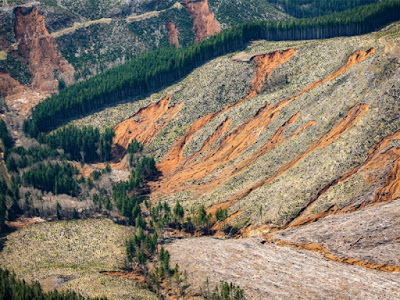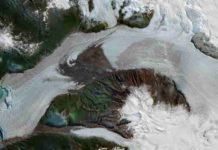
Because landslides can destroy property and reshape landscapes, scientists seek to predict when they will strike and to model their behavior. Previous work revealed that location and size are the most important characteristics that determine the impacts of shallow landslides less than a few meters deep. However, modeling these parameters presents unique challenges to researchers.
One common strategy involves digitally representing the landscape as a grid of adjacent cells or blocks with different physical properties, such as elevation, slope, soil depth, and pore pressure. This approach allows researchers to simulate the landscape in three dimensions, incorporate variation between cells, and account for the lateral effects of friction and plant root reinforcement.
However, the spatial arrangement of groups of unstable grid cells is not known. To overcome this issue, the computer could try to test every possible arrangement of blocks, but this strategy becomes computationally demanding or even impossible as the number of blocks increases. The authors point out that testing a 1-square-kilometer area composed of 1 million blocks generates 21,000,000 possible arrangements—a computational task beyond even our best computers.
To help reduce this burden, Bellugi et al. developed a search algorithm—a sequence of computer operations—that analyzes hillslope properties and outputs clusters of unstable blocks, allowing larger swaths of land to be analyzed using the gridded cell method. The team tested their new model on a virtual hillside as well as on data obtained from a landslide in Coos Bay, Ore. The algorithm performed well in both cases, allowing scientists to predict the location and approximate size of landslides with useful accuracy.
The results should allow future teams to better understand how shallow landslides develop in three dimensions without the need for such arduous computation. They should also give scientists the ability to scout for hazardous conditions that might cause loss of human life or property.
Reference:
hultz, D. (2015), Efficiently predicting shallow landslide size and location, Eos, 96, DOI:10.1029/2015EO037063. Published on 8 October 2015.
Note: The above post is reprinted from materials provided by American Geophysical Union. The original article was written by David Shultz.










